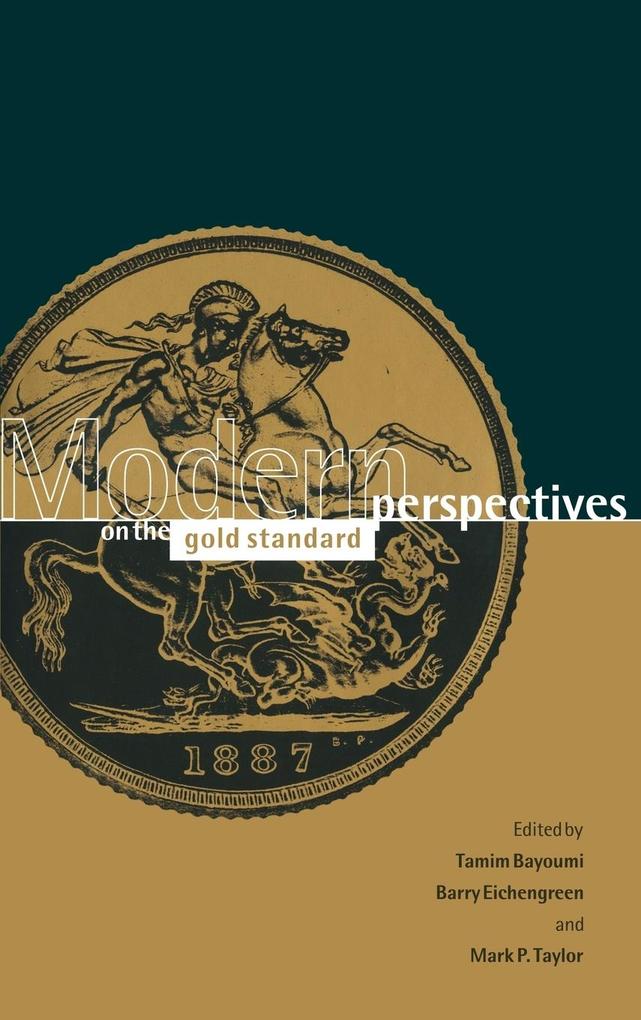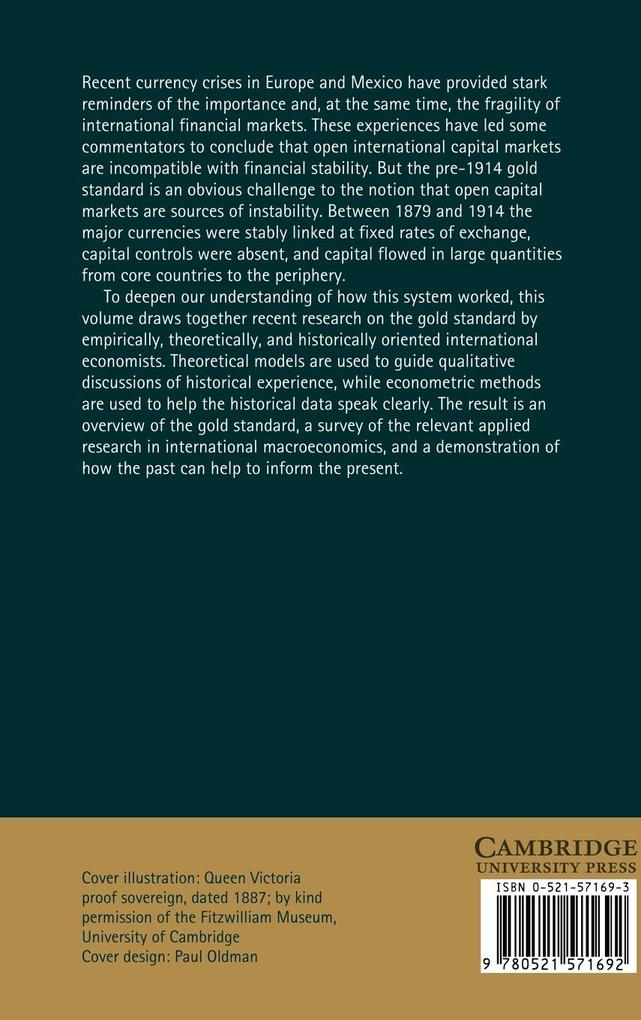This book explores exchange rate instability during the 1990s in the light of the operation of the gold standard in the years prior to 1914.
Inhaltsverzeichnis
Part I. Introduction: 1. Modern perspectives on the gold standard. Introduction Tamim Bayoumi, Barry Eichengreen and Mark P. Taylor; 2. Unit roots, shocks and VARs and their place in history: an introductory guide Terence C. Mills; Part II. Operation of the Gold Standard: 3. The gold standard as a commitment mechanism Michael D. Bordo and Finn E. Kydland; 4. Market efficiency and regime efficiency under the 1925-1931 dollar/sterling gold standard Lawrence H. Officer; 5. Credibility and fundamentals: were the Classical and interwar gold standards well-behaved target zones? C. Paul Hallwood, Ronald MacDonald and Ian W. Marsh; Part III. Adjustment Mechanisms: 6. The stability of the gold standard and the evolution of the International Monetary Fund Tamim Bayoumi and Barry Eichengreen; 7. International adjustment under the Classical gold standard: evidence for the United States and Britain, 1879-1914 Charles W. Calomaris and R. Glenn Hubbard; 8. Balance of payments adjustments under the gold standard policies: Canada and Australia compared Trevor J. O. Dick, John E. Floyd and David Pope; Part IV. Monetary Issues: 9. Money demand and supply under the gold standard: United Kingdom 1870-1914 Forrest H. Capie and Geoffrey E. Wood; 10. Stability and forward-looking behaviour: the demand for broad money in the United Kingdom 1871-1913 Mark P. Taylor and Geoffrey E. Wood; Part V. Exchange Rate Behavior: 11. The dollar/pound exchange rate and fiscal policy during the gold standard period Graciela L. Kaminsky and Michael Klein; 12. Exchange rate dynamics and monetary reforms: theory and evidence from Britain's return to gold Panos Michael, A. Robert Nobay and David Peel; 13. Conclusion: Dé jà vu all over again: lessons from the gold standard for European monetary unification Barry Eichengreen.











